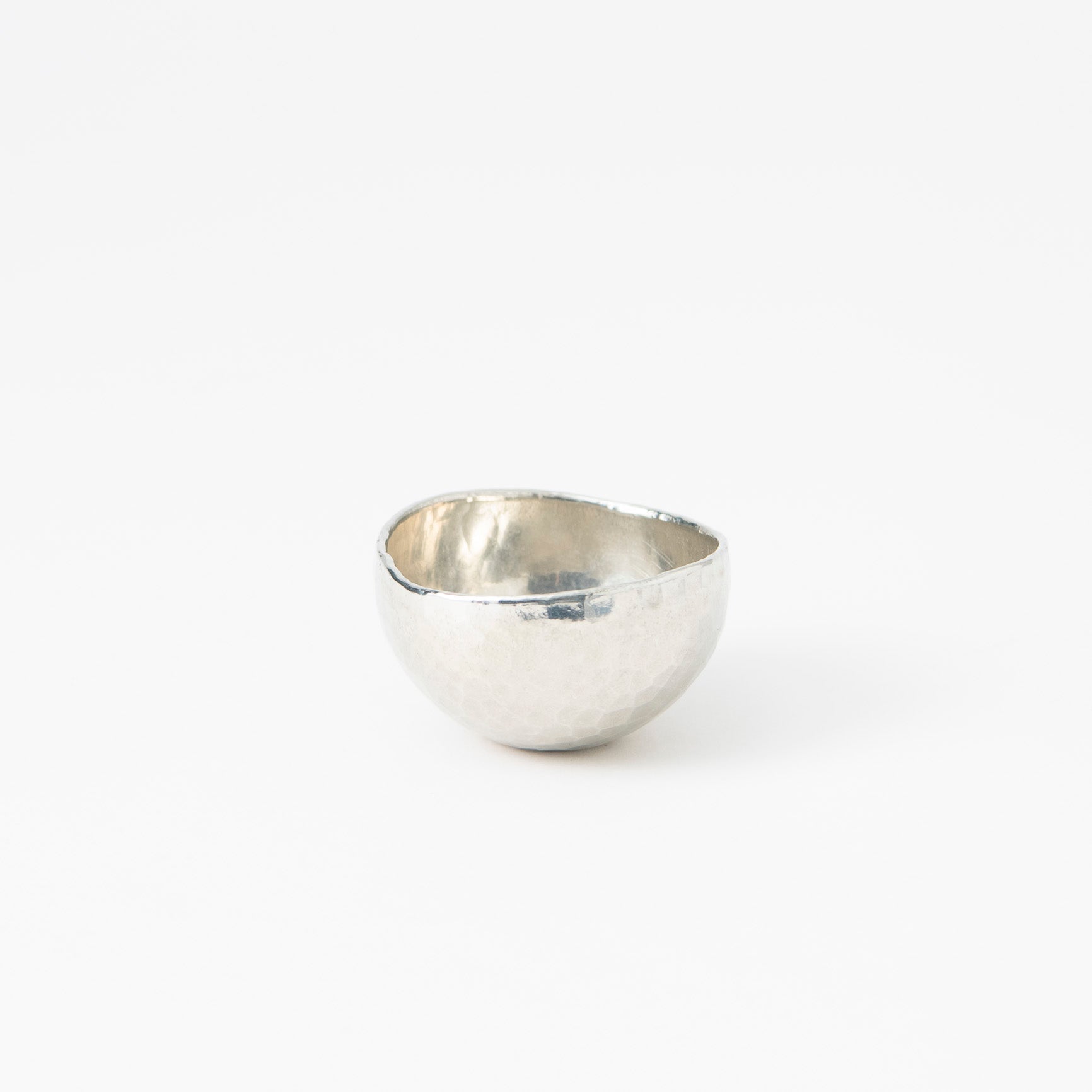
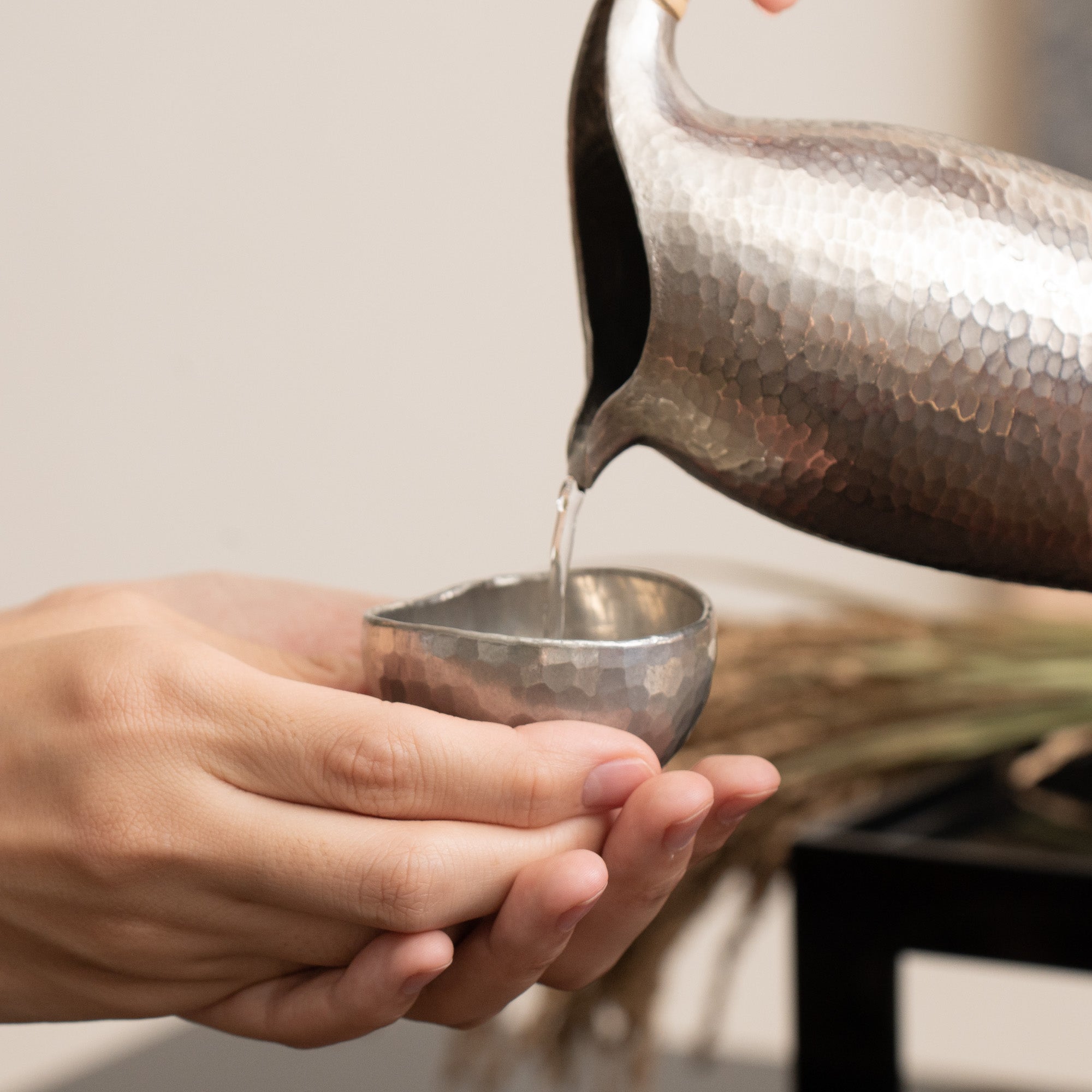
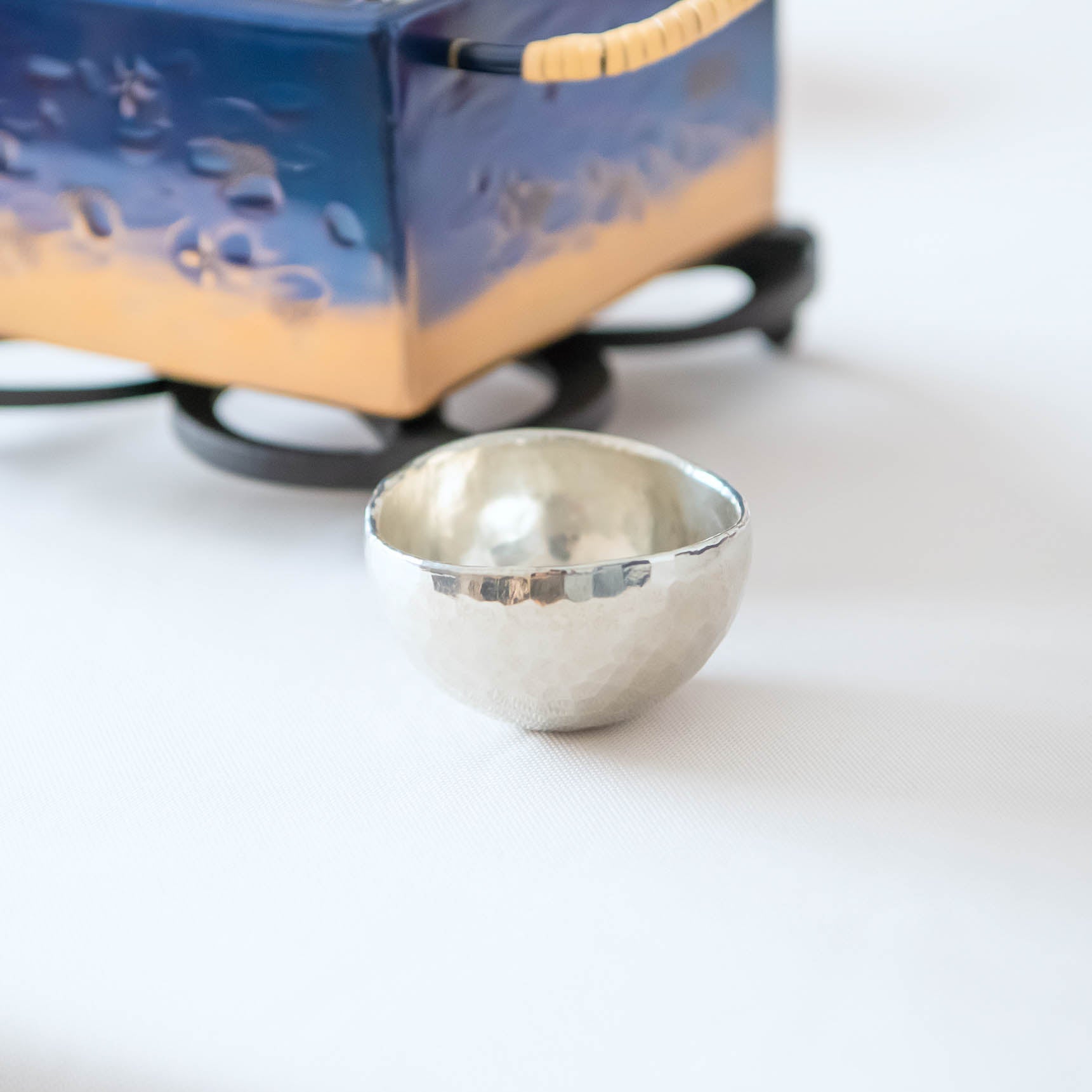
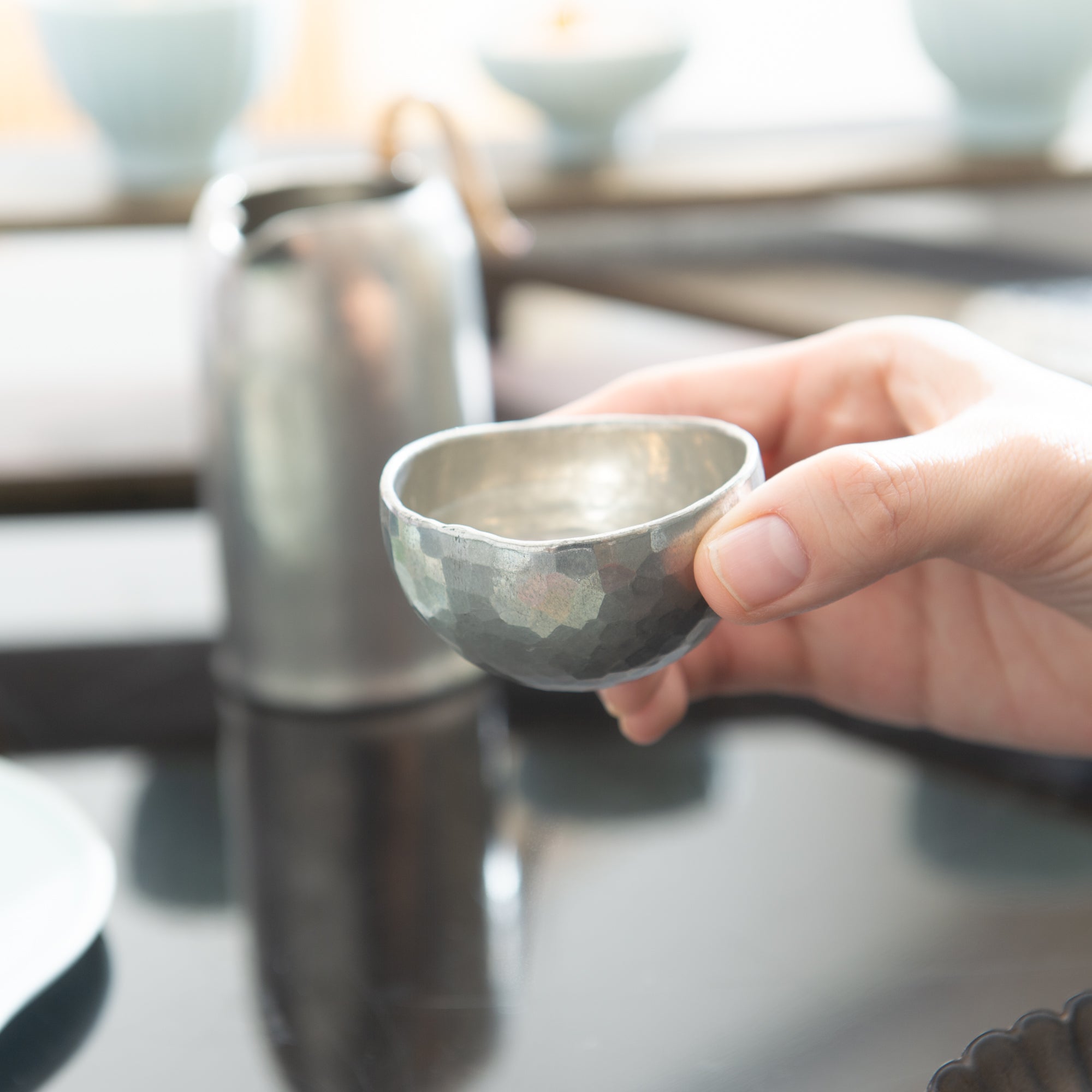
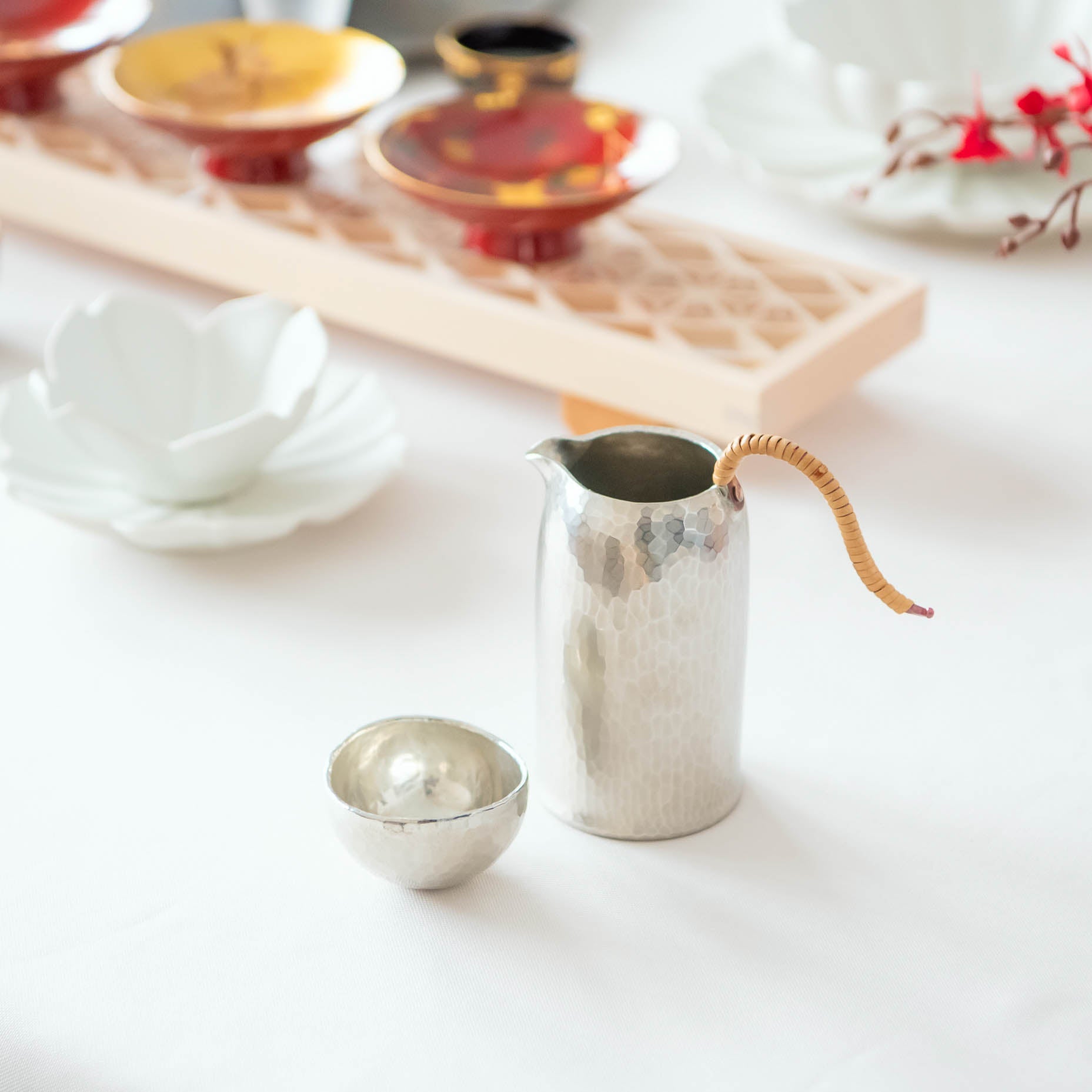
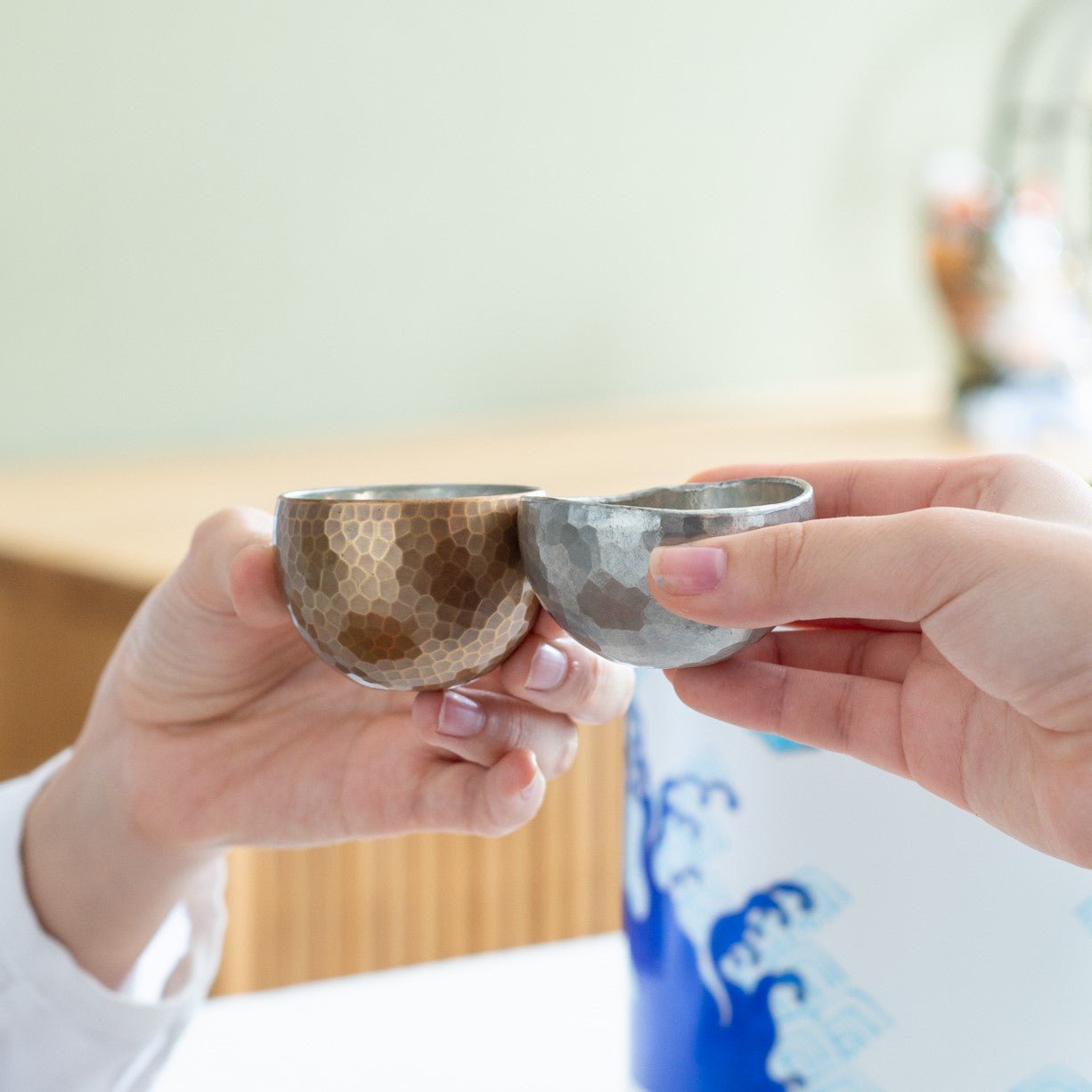
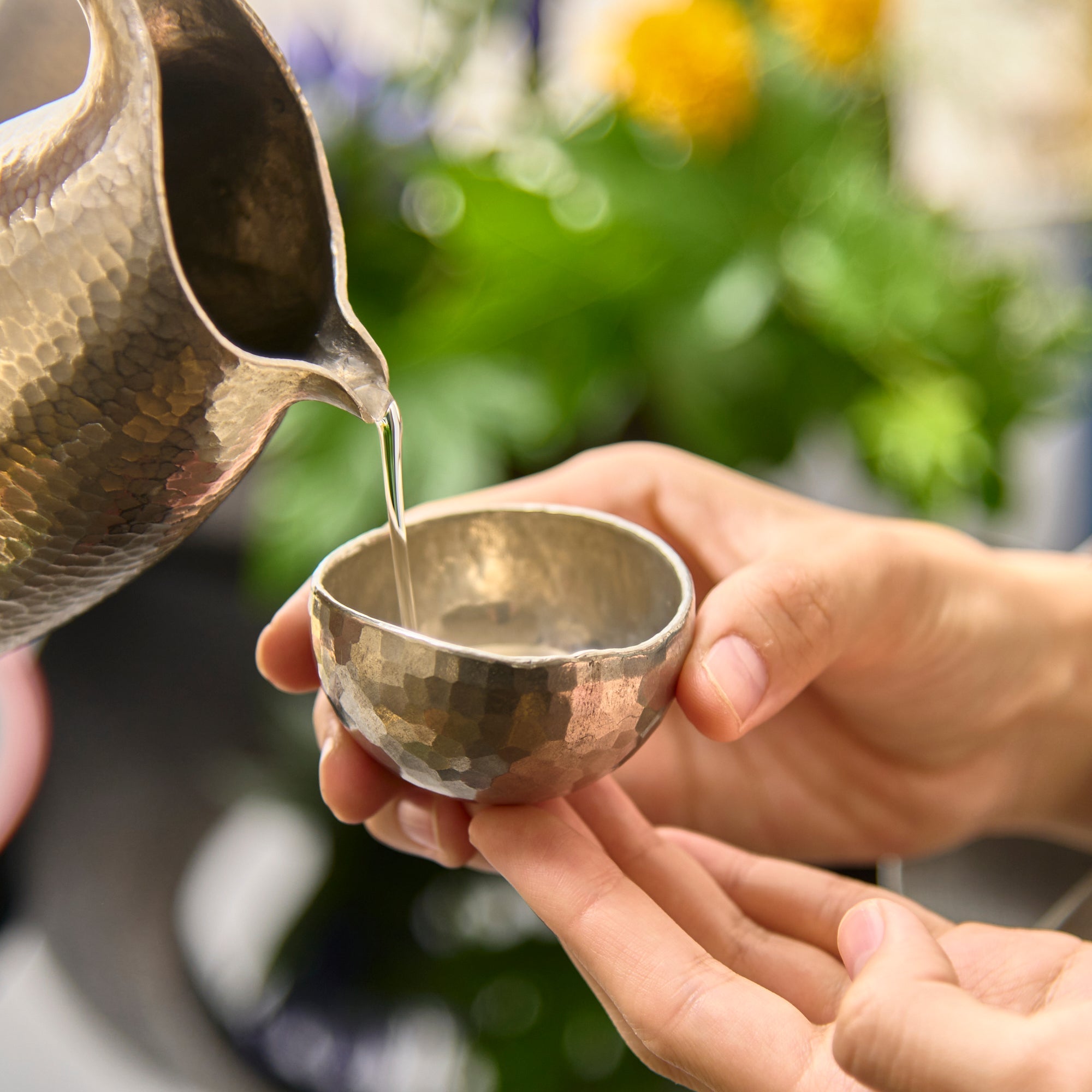
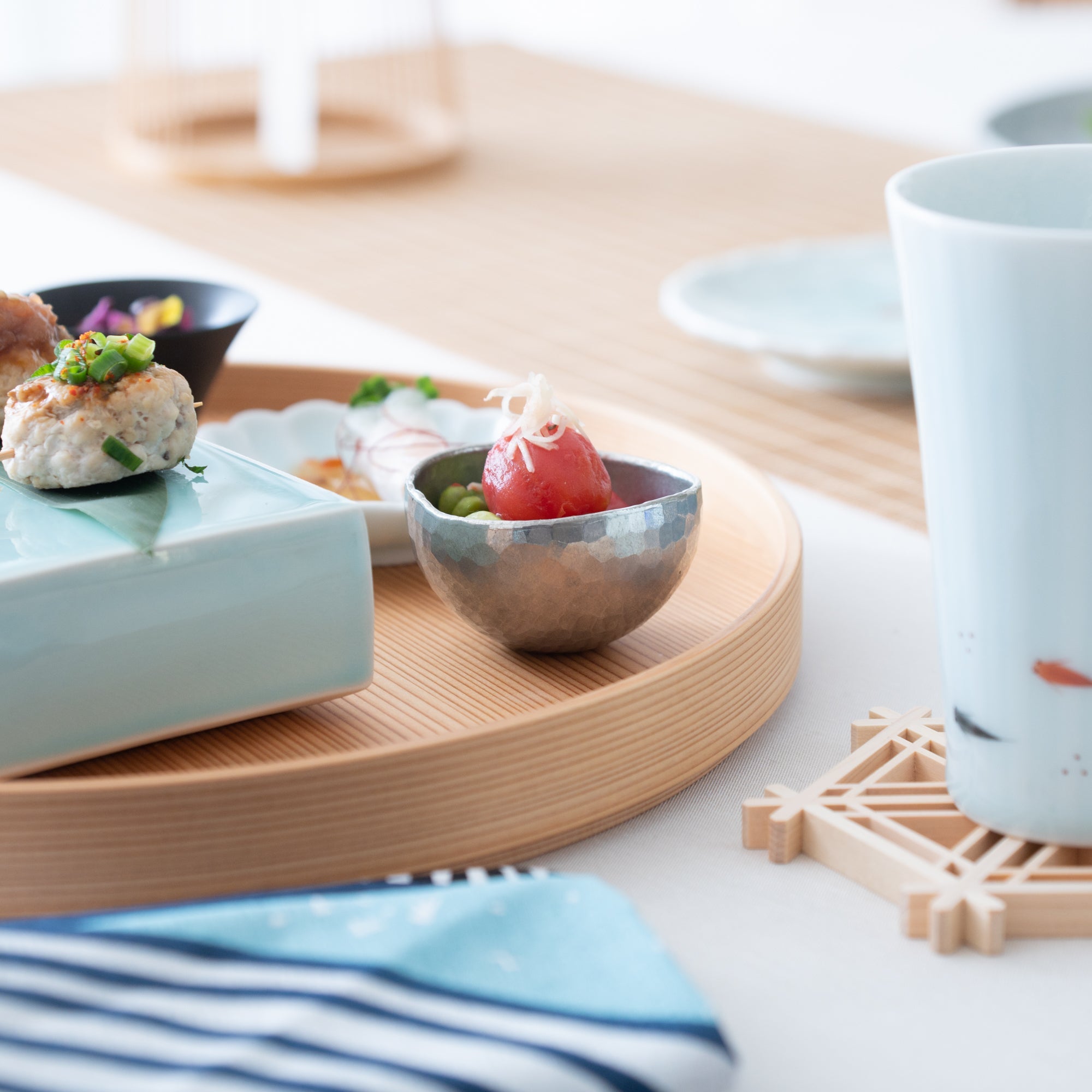


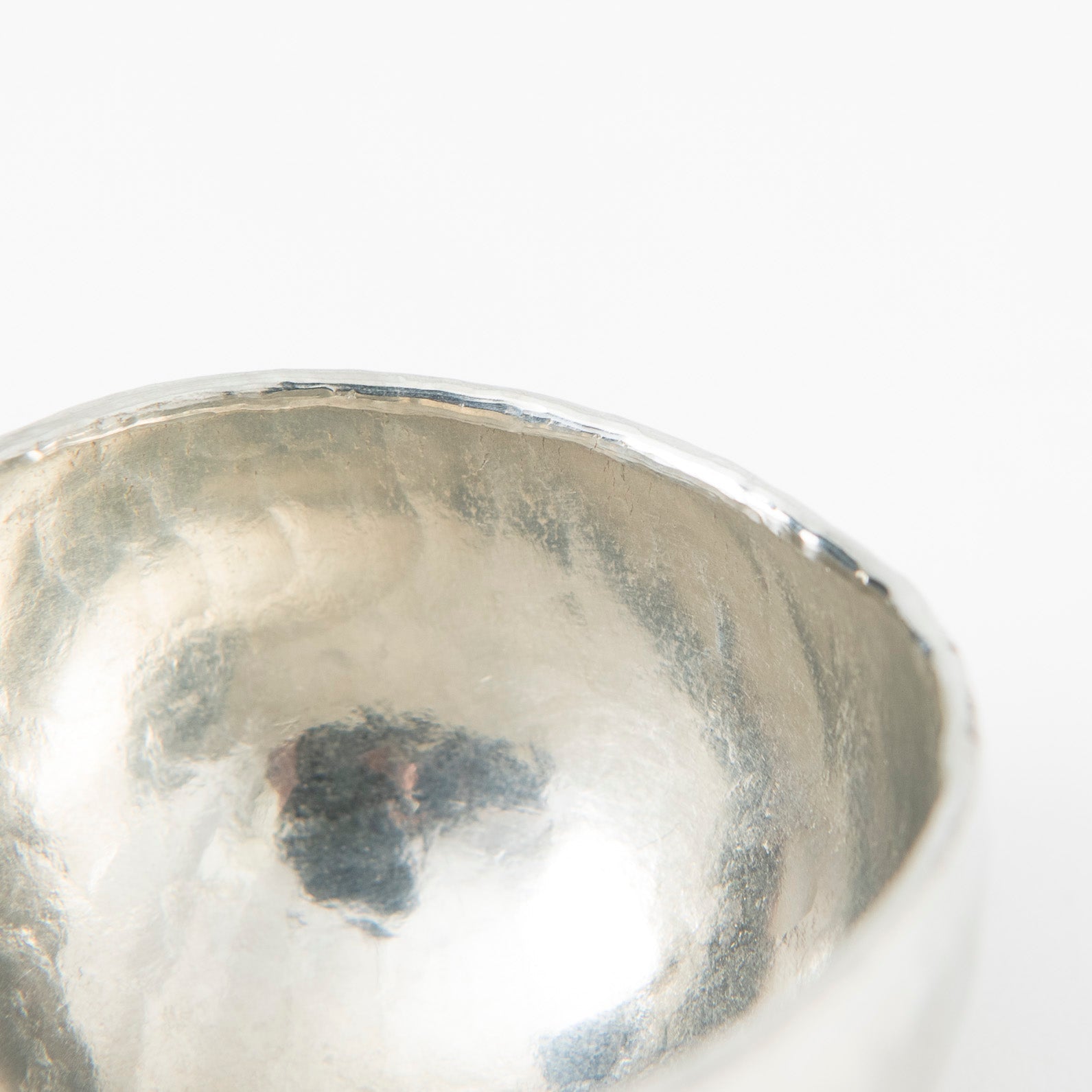
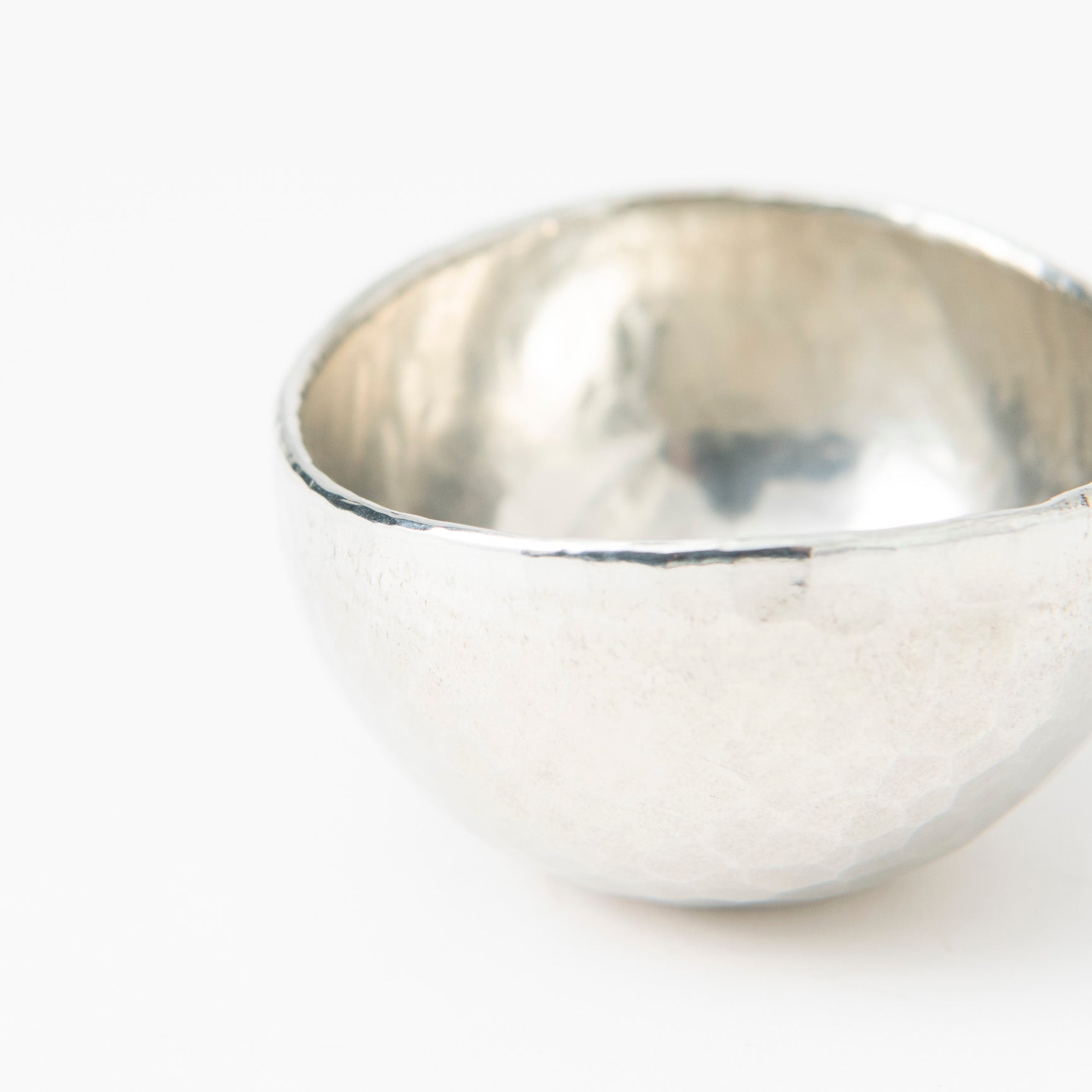
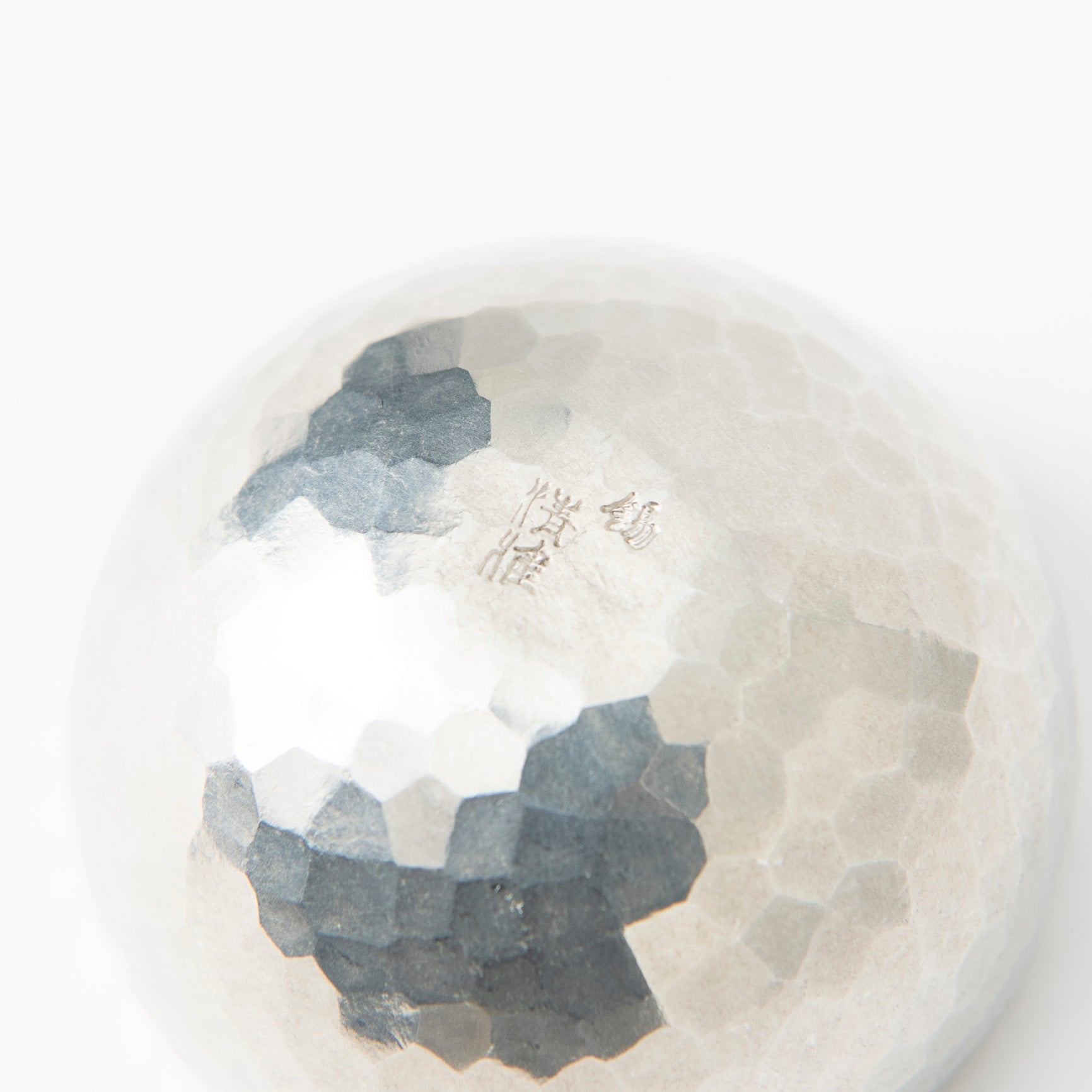
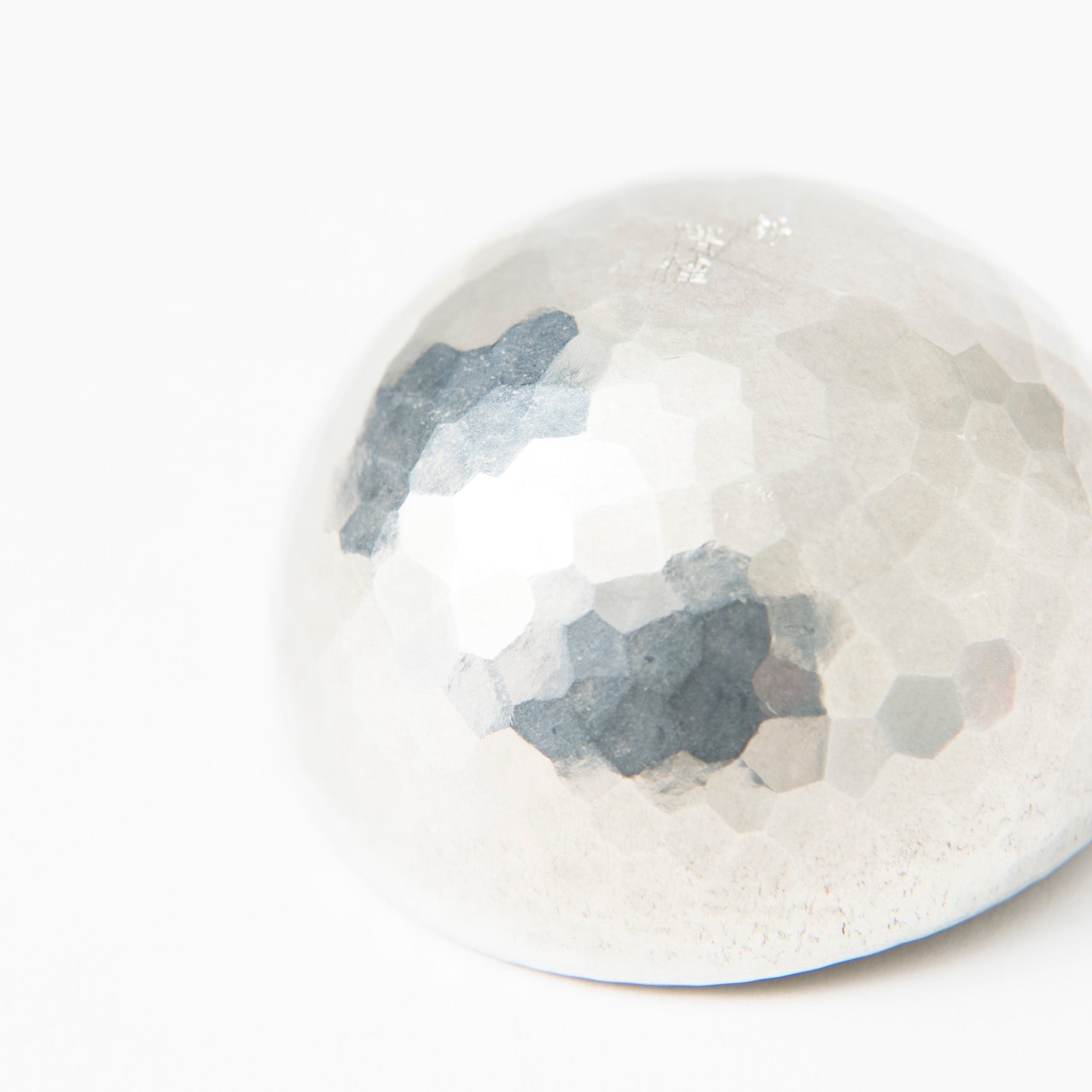
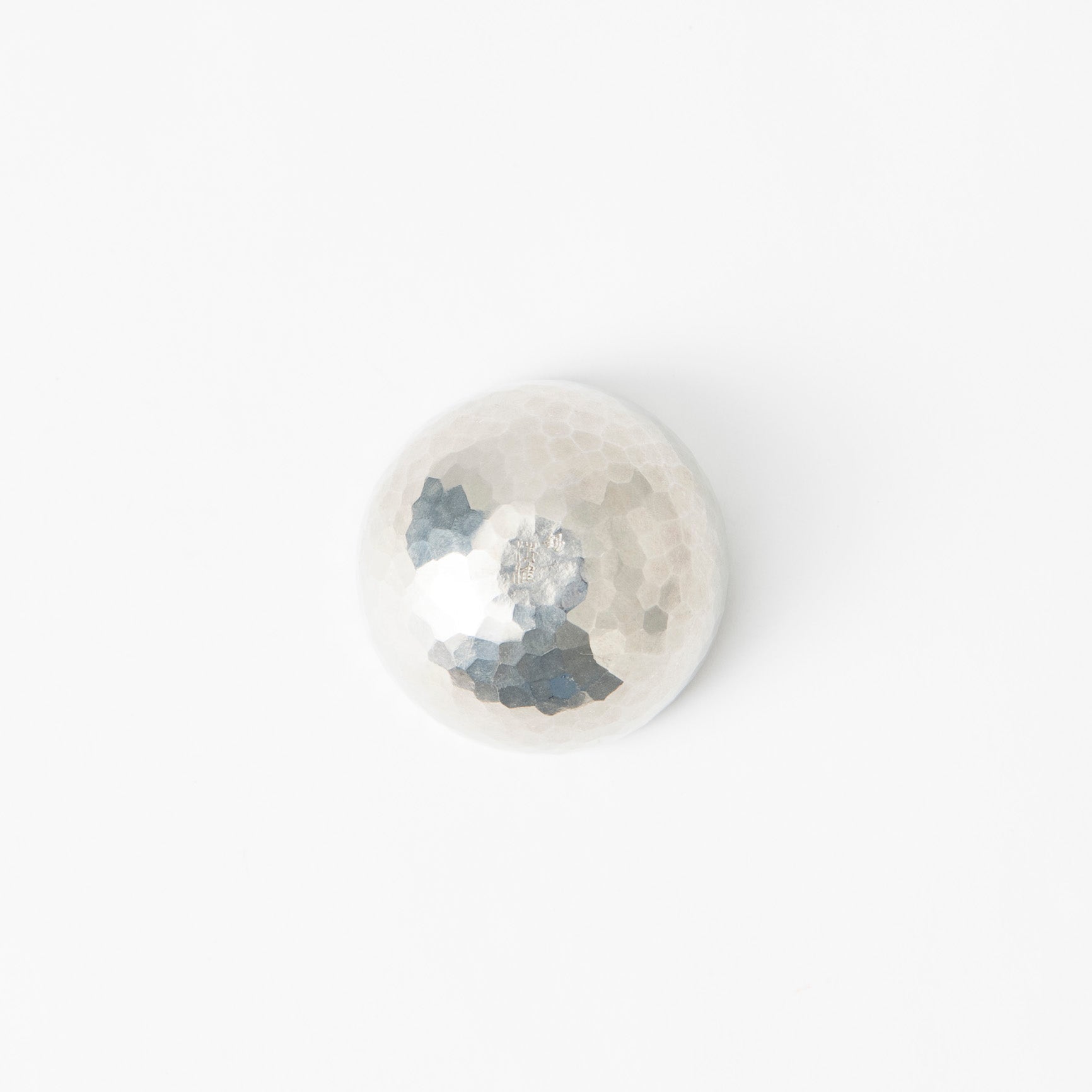
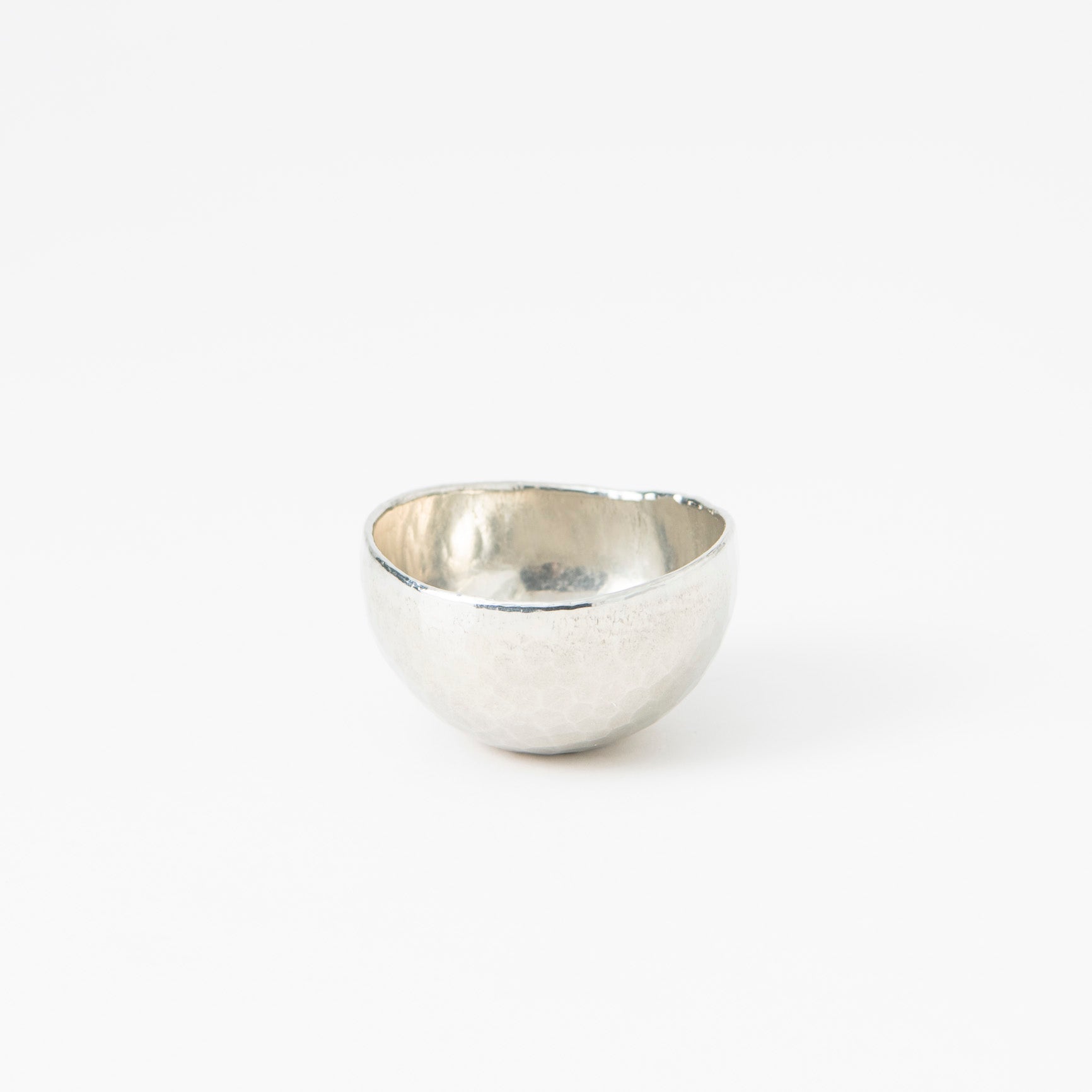
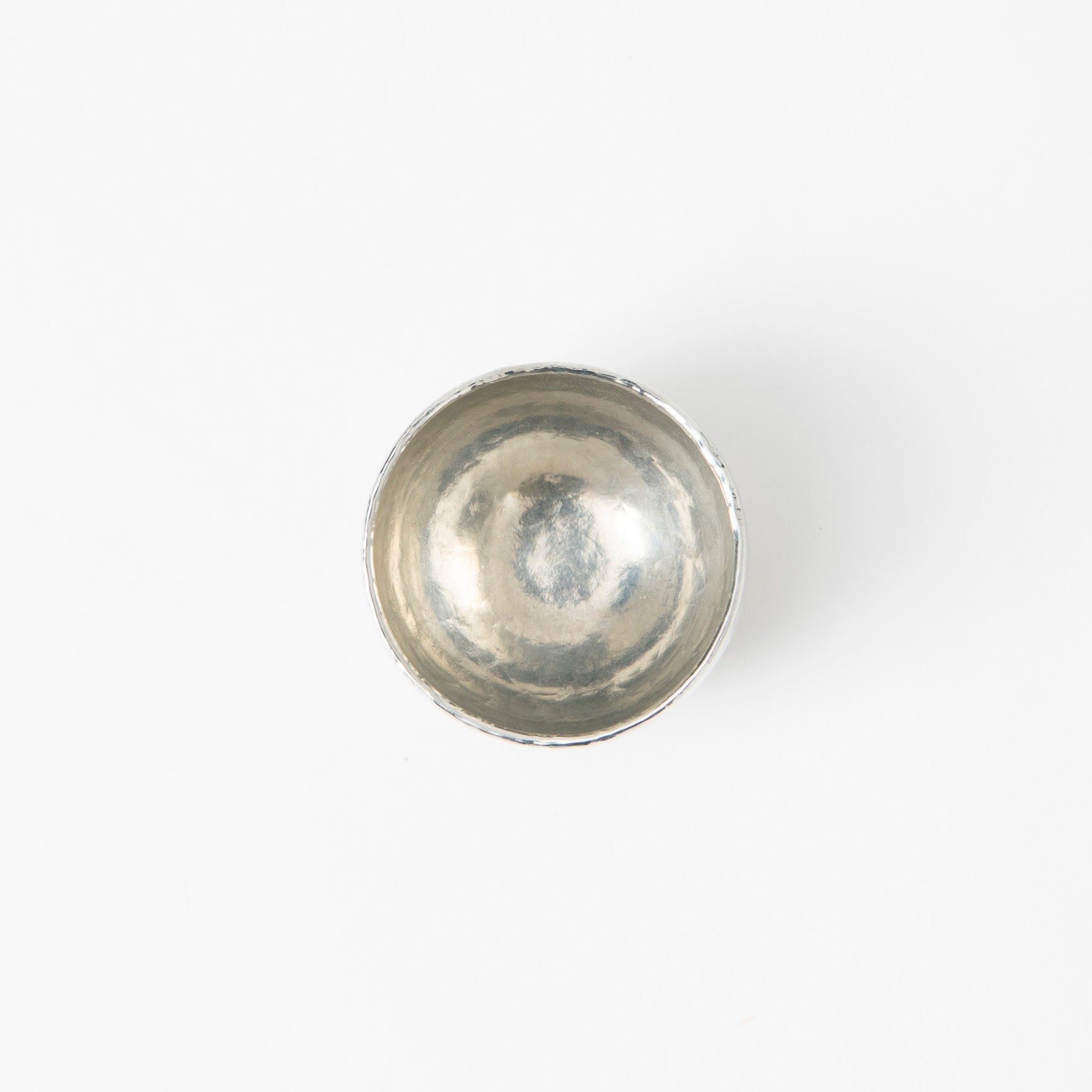
Seigado Tin Guinomi Sake Cup
Estimated Shipping Widget will be displayed here!
This tin Guinomi sake cup is made by Seigado, which has a workshop in Niigata Prefecture. The company mainly produces sake carafes and cups with a form that fits comfortably in the hand and a luster and strength that can only be achieved by forging and beating repeatedly.
It is produced using a technique called "Tsuiki'', in which craftsmen hammer metal plates one by one to create shapes and patterns. The shape of the rim is slightly wavy, rather than flat, to convey the charm of handmade. The reflection of the patterns shines through, making it a beautiful product.
Tin was prized as a material suitable for storing water and other things because of its ability to purify what is put inside it. It is also suitable for enjoying the taste of alcohol itself since it does not retain any odor.
Due to its high thermal conductivity, it should be used for warm sake, not extra hot one. The moderate weight of this Guinomi is comfortable and allows you to enjoy a good sake slowly.
Choose options



















